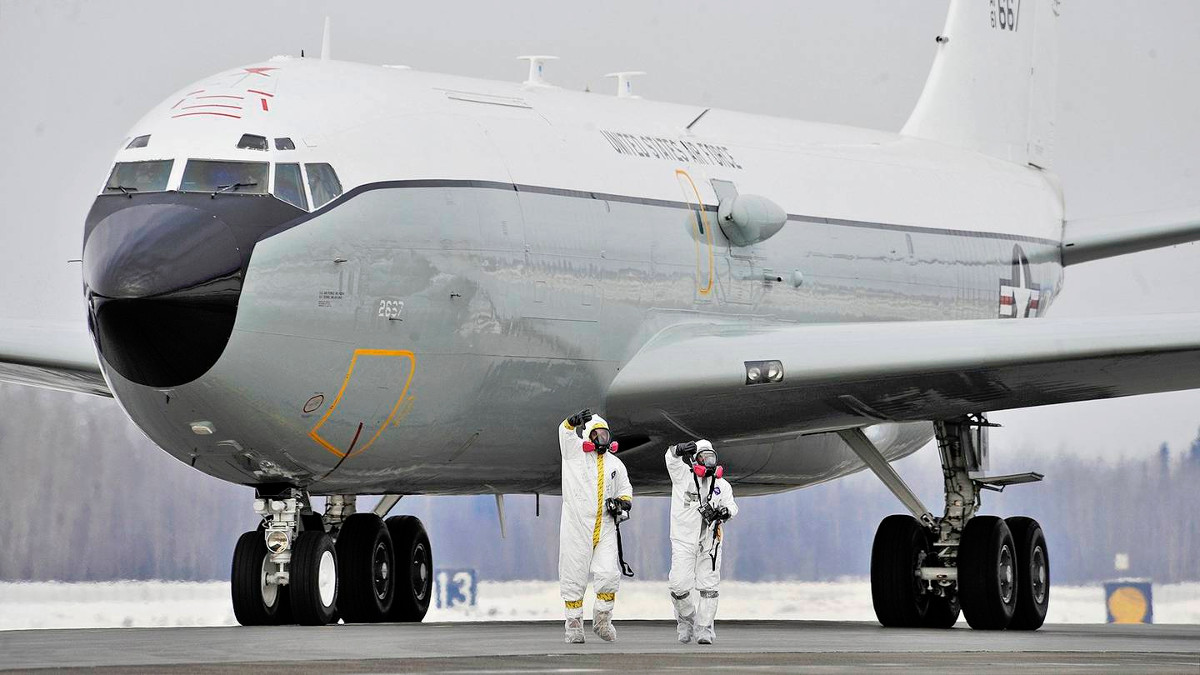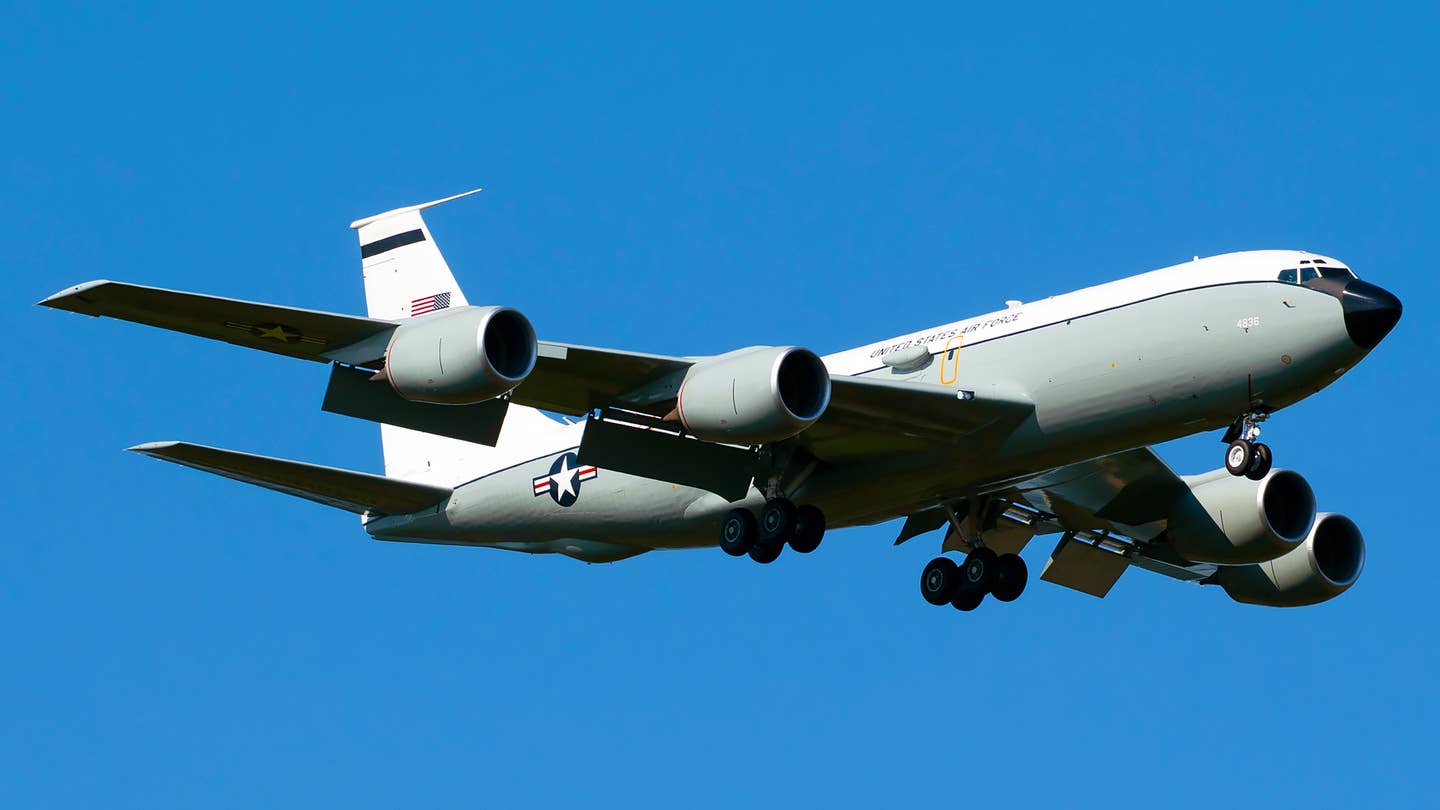The first of the US Air Force’s (USAF’s) fleet of three new WC-135R Constant Phoenix ‘nuke-sniffing’ planes completed its flight test this week in Greenville, Texas, and is scheduled to be delivered in July.
1000+ Killed! Why Did US Navy Torpedo ‘Montevideo Maru’ That Remains Australia’s Worst Maritime Disaster
The WC-135 Constant Phoenix is a special aircraft used by the USAF for nuclear test monitoring, airborne radiological sampling, and arms control treaty verification.
The new WC-135R with the serial number 64-14836 is slated to replace the USAF’s lone operational nuke-sniffer, the WC-135W, carrying the serial number 61-2667, which is the last aircraft from a batch of 10 Boeing C-135B cargo aircraft that were first converted into WC-135B nuke-sniffers in the 1960s.
Over the years, the fleet kept shrinking, with a few planes continuing in service into the 1990s. Some of these were then upgraded to the WC-135W configuration, plus the Constant Phoenix fleet was also joined by a WC-135C converted from a Looking Glass EC-135C airborne command post jet.
By 2003, only one WC-135W and the WC-135C were left in the active Constant Phoenix fleet, which further came down to just one after the WC-135C was also retired in November 2020.
WC-135 Constant Phoenix
The Constant Phoenix aircraft or the nuke-sniffers are equipped with a suite of sampling and collection devices that detect radioactive ‘clouds’ in real-time from a safe distance for the crew operating the aircraft.
The collection system consists of external flow-through devices to collect particles on filter paper for later analysis. At the same time, there is a podded particulate sampler/Radiation Monitoring and Analysis System (RMAS) that detects radiation contact and the Directional Gamma Sensor System (DGSS) that guides the crew toward the plume for collection.
The radioactive samples are captured and stored using the Whole Air Collection System (WACS) from the aircraft’s bleed air system.
The aircraft has an integrated control system that allows a real-time mission system interface and monitors external radiation levels for safety and analysis.
It is controlled by the USAF’s Air Force Technical Applications Center and operated by the 45th Reconnaissance Wing at Offutt Air Force Base in Nebraska.
High Profile Air Sampling Missions
Since its introduction in the 1960s, the fleet of WC-135s has conducted air sampling missions over the Far East (East and Southeast Asia), Indian Ocean, Bay of Bengal, Mediterranean Sea, the Polar regions, and off the coasts of South America and Africa.
It has monitored high-profile nuclear incidents, like the Chernobyl nuclear power plant disaster of 1986.
A WC-135W was also deployed to collect data on the nuclear tests conducted by India, Pakistan, and North Korea.
In October 2021, the last remaining WC-135W flew over the South China Sea, accompanied by four other US surveillance aircraft, to probe the radioactive material following the collision of a US nuclear-powered submarine with an unknown object while submerged in the South China Sea region.

Earlier this year, the WC-135W was flying over Europe in the wake of Russian forces taking over the Chernobyl Nuclear Plant on February 24 as they invaded Ukraine.
The plane was operating out of RAF Mildenhall in the UK and reportedly undertook patrols as far as the Belarusian border.
The latest reports of WC-135W activity emerged in May from the Pacific region, where the aircraft was said to have flown from the UK to Kadena Air Base in Okinawa, Japan.
USAF RC-135S 62-4128 HULK14 operating over the Sea of Japan monitoring for a potential North Korean missile launch. pic.twitter.com/dGkSNpYTjj
— Aircraft Spots (@AircraftSpots) May 13, 2022
The aircraft trackers found the WC-135W flying over the Sea of Japan, monitoring for a potential North Korean missile launch.
New WC-135R Conversion Project
Failures have mired Constant Phoenix’s fleet of operational aircraft history due to a lack of investment over the decades.
WC-135Ws had a 40% ‘break rate’ between 2015 and 2016, according to a recent report by Overt Defense. A break rate measures how often an aircraft suffers a mechanical failure that renders it inoperable for a prolonged duration.
During its air sampling missions in Europe in February, the WC-135W was forced to make an emergency landing at RAF Mildenhall after suffering hydraulic failure.
JAKE 21 WC-135W 61-2667 rtb to Mildenhall Squawking 7700 declaring an emergency with Hydraulic failure working Swan Mil 259.600 #NLspot pic.twitter.com/aIq7O8VCiB
— ''The Lazy ? Garden ?'' Eindhoven Spotter ?? (@EHEH_Spotter) February 22, 2022
After years of aircraft failure, the USAF finally decided on a WC-135R conversion project officially announced in 2018, for which the service requested $208 million in its budget request for the Fiscal Year 2019, as per a report by The War Zone.
The USAF deemed that conversion was more cost-effective than extensively modifying the increasingly unreliable WC-135s.

According to the budget request, the WC-135Rs will continue with the same sensor package. Still, it will feature a new CFM-56 turbofan engine that is far more reliable, supportable, and efficient than the old TF-33 Pratt & Whitney engine, which was a significant pitfall holding back the WC-135Ws from reliably carrying out air sampling missions globally.
According to Overt Defense, the WC-135Rs will also have updated avionics hardware to the same standard as the existing RC-135S Cobra Ball and RC-135W Rivet Joint aircraft.
- Contact the author at tanmaykadam700@gmail.com
- Follow EurAsian Times on Google News




